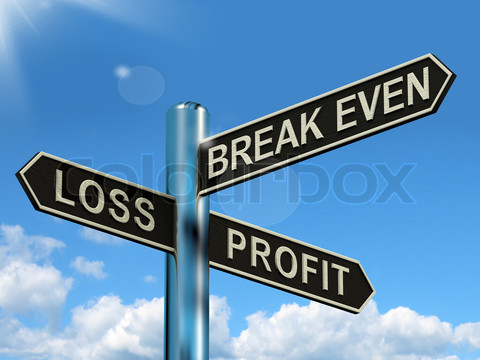 97% of business owners (hard working entrepreneurs just like you) ask themselves 1 question without fail every single day. Do you know what that is?
97% of business owners (hard working entrepreneurs just like you) ask themselves 1 question without fail every single day. Do you know what that is?
Do I (or am I going to) have enough cash to pay x?
Unfortunately, that is without a doubt the worst question you could ask yourself. Knowing exactly where you stand financially (i.e. your cash flow) is critical to your business. Your survival hinges upon your ability to cover all taxes, payments to suppliers and operating costs as they come due.
So if cash flow is so vital – why is this question so very bad for you and your business?
There are 3 common mistakes that I see business owners making every single day – and they relate to that question you’ve been asking yourself. I would like to share them with you right now so you can stop making them and start getting on top of your cash flow position.
- Stop looking for cash flow in all the wrong places – when you ask yourself the question about cash, the most likely thing that you will do next is look at your bank balance. Unfortunately, your bank account merely shows your cash on hand but it will never tell you what your cash flow is or (more importantly) HOW to improve it. Seeing that you do not have any cash is NOT enough. You need to know what your cash flow position is and where specifically cash is trapped in your business. Once you know where the cash is trapped, it will be a lot easier to take action to unlock it and make it available for use in your business.
- Stop relying on a cash position estimate – this second point is related to my first one. I see so many business owners just like you making this mistake every day. And it is not entirely your fault because many of your accounting reports may be incorrectly labelled. Most accounting software packages contain a report that shows your bank balance and lets you project what your cash position might be in the future – for example 30 days from now. They often incorrectly label this a cash flow projection. Actually what you are really doing by looking at this report is very subjective. It takes your bank balance (which we talked about before) and adds all the sales you might have in the future minus the bills you might pay. Unfortunately, this involves a lot of speculation about what might or might not happen in the future and it still doesn’t give you a clear picture of what you need to do to unlock cash in your business. More often than not, this exercise will lead to you focusing more and more of your time and resources on sales – and that activity may actually worsen your cash flow position. Especially if you sell on credit terms or if you sell stock that you need to order in and pay for today.
- Waiting for your bookkeeper or accountant to tell you what your cash flow position is – this is probably the worst mistake of all because it means that you might be waiting for weeks or months with little or no money in your account to pay bills or wages. This is madness. You need to be able to print your profit and loss and balance sheets today and calculate your cash flow right now. It’s not that hard to do and the entire process will take you less than 15 minutes.
The important thing to remember is that cash and cash flow are not the same thing. If your company is profitable on paper yet it maintains a negative cash flow for an extended period of time, eventually it will go under. Being able to calculate and monitor your cash flow position regularly is critical to your company’s health and survival. You can have the most brilliant product or service but if you don’t have positive cash flow, your business will eventually go under.
If you want to learn how to calculate your cash flow quickly and easily, I recommend that you check out Chapter 1 of Financial Foreplay®. It’s been endorsed by the most recognized accounting software brands in the world and it can help you get on top of your numbers and whip your business into shape today.
When clients ask how to close more sales and free up cash in their business, I like to tell the story of Byron the guns and collectibles dealer. He lives for his business because it gives him the chance to make a living out of doing what he enjoys most: collecting.
He was struggling 12 months ago because he was out of cash and unable to buy new stock. This was a real problem because the strength of his business lay in constantly having new items to show off. New stock encouraged his customers to come back often; no new stock meant they would tend to check out his competitors first.
When I first walked into Byron’s shop, one of the most obvious items was a beautiful old gun, proudly (and securely) displayed in a glass cabinet. I couldn’t help but ask how much it was worth. He explained that it he had bought it for $5,000 dollars, but was looking to sell it for $7,000. Following a hunch that I had hit on his problem straight away, I asked Byron when he had bought the gun. He didn’t remember exactly, he said, but thought it was about five years ago.
I asked Byron how many other, similarly high value items he had in his store. We went for a walk and in the course of showing me around, he pointed out at least a dozen items which he had bought for over $5,000 over the last few years. In each case, he was quick to tell me how much he was intending to sell the item for, and the margin was always 30 to 40%. But the fact was he hadn’t sold these items so they were costing him money and, most importantly, causing him to miss the opportunity of buying new stock.
Byron had spent nearly $100,000 on expensive items over the years. The items were attractive and valuable, but they weren’t particularly rare, so they weren’t appreciating in value significantly. In effect, Byron had put $100,000 on the shelf of his office and left it there for all that time. In other words, while he wasn’t borrowing money from the bank, in effect he was borrowing it from himself. He had missed the opportunity to invest the money somewhere where it would give him a solid return, such as in a term deposit or in blue-chip shares. And he missed the opportunity of using that money to buy smaller, less expensive items that he knew would sell quickly. He needed to do something (and fast) if he wanted to close more sales.
Compounding all of this was the fact that the global financial crisis had caused demand to drop markedly which meant his customers just weren’t coming in or spending as much as they used to.
By making a few simple adjustments, responding to trends in the industry and addressing a need that his customers, Byron was able to turn his business around, close more sales and double his bottom line.
The first thing he did was to free up some cash by actively selling some of his more expensive and slow moving items. He used online auction sites and his own network to find buyers, while keeping his marketing costs low. In some cases he had to sell the items for a little less than he had intended, but the benefit (when he was able to close more sales) was cash in his pocket.
The next thing he did was set up some systems to keep better track of inventory. He started by recording everything and noting the age of all the items (i.e. the length of time he had held it in stock). We agreed that in future, any item that had not sold after 8 months would be reviewed. Byron would investigate the item’s market value and decide whether or not it was increasing in value sufficiently to be worth keeping. If not, he would act to move the item on.
After a few months, Byron was making much smarter purchasing decisions. He was still enjoying ‘collecting’ for his store, but his focus was different. His focus was less on attractive, expensive but not-so-rare items, and more on smaller items he knew he could sell quite quickly. To his pleasant surprise, he increased cash flow by $100,000 in 3 months and found that by using this strategy, he was able to do more shopping rather than less, because he had more cash available to spend.
Lastly, but perhaps most significantly, Byron introduced 2 new complementary strategies which literally transformed his business. To counteract the soft demand for firearms and the relatively fixed, low margins, Byron convinced his customers to purchase 18 months worth of ammunition upfront and he provided storage (if required) onsite. This allowed him to renegotiate terms and pricing with his suppliers, plus generate more cash flow in the short term. Since the margins on bullets was much higher than on the guns themselves, his overall profitability improved. In addition, Byron incorporated training and certification into his standard offering and opened up his target range to paying customers 3 nights a week. This allowed him to create new, highly lucrative income streams and increase the frequency with which his customers came into his business.
While Byron’s story on how to close more sales might seem unique and industry specific, there are many ways to take the overarching philosophy of what he did and utilize it to improve your operating cash position.
How can you identify and start selling silver bullets in your business? Begin by first examining the big picture…
Identify the items in your inventory that are essentially dead stock – i.e. haven’t sold in over 8 months. Determine what the total value of the stock is and devise a plan to convert it quickly into cash using a minimal amount of advertising.
Focus on the gross profit margin of all of your products and services. Are some of these more profitable than others? To improve your overall performance, concentrate on the former, and improve or eliminate the latter. What items or services could you add which would allow you to service a need, improve your relationship with your customers and grow your bottom line?
Negotiate better terms and/or prices with your supplier in order to increase the amount of gross profit you make on each sale. Consider which items you could sell in bulk upfront to your customers and use this new volume to improve your buying leverage or cut out the middle man.
Marketing should not be treated as a fixed and sacred cow in your business. Do not spend another dime on marketing until you ensure that you are maximizing the amount you retain on each sale to cover fixed costs. Also, only spend money chasing customers and sales if you can measure the financial return that you will get. Unless you are a multinational brand, money spent solely on branding is wasted.
Make it easy for your customers to find you and see what you have to offer on the internet. The database of potential shoppers that you have earned the right to speak to, is in fact your greatest asset. What can you do today to add value, enhance their experience and close more sales?
Finally, examine the fixed expenses in your business. Identify whether or not there is a cheaper, faster or superior alternative that doesn’t compromise quality or customer service. Is there a way to shift how and what you do so that fixed expenses can vary (i.e on a pay per use basis) with the level of production and/or sales? And remember, no one has ever grown their business by [exclusively] focusing on cost cutting – so use this tactic as your final step in a comprehensive plan to get your business firing and hitting targets. Your primary goal is to close more sales and increase the amount of gross profit (or contribution margin) that you make from each sale.
Knowing exactly where you stand financially – i.e. your cash position – means that you don’t have to wonder “do I have enough money to cover my rent and wages this month?” The health and vitality of your business are dependent upon your ability to cover all tax obligations, payments to suppliers and operational expenses as they come due in your business.
Unfortunately, knowing where you stand is not as simple as looking at your bank balance or your net profit. Your bank account merely shows your cash on hand but it will never tell you what your cash flow is or (more importantly) HOW to improve it.
Cash and cash flow are not the same thing. Cash flow is about the movement of cash in and out of your business as it operates over a period of time.
This distinction is crucial to your success – if your company is profitable on paper yet it maintains a negative cash flow for an extended period of time, eventually it will go under.
But what does this mean for you and your business?
Essentially it means that, “cash flow is King”. You cannot afford to run your business by simply printing and looking at your Income or Profit and Loss statement each month. Being able to calculate and monitor your cash flow position regularly is critical to your company’s health and survival. You can have the most brilliant product or service but if you don’t have positive cash flow, your business will eventually go under.
If you want to learn more about this topic “Finding the Point in business” – improving both your profitability and cash flow, I recommend that you check out Chapter 1 of Financial Foreplay®.
That’s The Good News, Now Do You Want To Hear The Bad News?
If you do a quick search on the internet, you will uncover hundreds of experts, coaches, accountants, journalists and government organizations that quote the statistic “8 out of 10 business fail in the first year”. However, the fact that the statistic is widely touted doesn’t necessarily mean that it’s true or backed up by empirical evidence.
So what is the truth? I searched the internet and couldn’t find confirmation of any study that was done to back-up this statistic (that 8 out of 10 businesses fail) by a reputable or well-known bureau. What I did in fact find was some evidence to the contrary. According to credit reference checking agency Veda Advantage, only a small percentage of new businesses close in their first 12-months of business.
What is the exact amount, you ask? Would you believe, less than two percent?
However, they assert another 32 percent close their doors between their second and fifth year of operations, while 21 percent wind up between the sixth and ninth.
So, that is the good news. However, as you can probably guess, it’s not ALL good news.
Just because a start-up doesn’t go under in the first 12 months, doesn’t mean that the owner is running a successful enterprise. I wonder if anyone has bothered to measure how many of the businesses who survived:
- Paid the owner a wage that was at least equivalent to what he/she could have earned elsewhere as an employee?
- Generated a profit and positive cash flow? and
- Had enough working capital to service their debt, pay taxes and suppliers etc. as they came due?
The first few years of business are incredibly risky. In working with hundreds of business owners, we have found that the large majority opt to forgo their salary or inject more equity to prevent them from going under prematurely. What this means is that, while they may not have “technically” gone under, these fledgling enterprises are far from commercially viable and successful.
Statistics can be both helpful and misleading at the same time. It is easy to assert figures but more difficult to substantiate their veracity or explain the implications thereof.
The author of an article or press release will often use statistics to capture your attention and motivate action. That’s why people use statistics – numbers are persuasive and have an aura of authority. A statistic like – 8 out of 10 businesses fail – gets attention, doesn’t it? Whether this data is accurate or not, is only half the story. As a business owner or manager, we must look deeper to find the insights that we can take away and use to improve our results.
Personally, I don’t care what percentage goes under. No matter how long you’ve been operating, if you’re not getting paid a salary, producing profit and generating positive cash flow, you’re not running a successful company. Closing your doors is only half the story. The doors may very well be wide open, but technically, no one is there.
04 Dec 2010
Is Inventory Killing Your Business?

Rhondalynn Korolak
Did you know that inventory is one of the great hidden costs of business?
Business owners should understand its importance of keeping it under control. Visit http://www.financialforeplaybook.com for more on this story…
Is Inventory Killing Your Business?
Did you know that inventory is one of the great hidden costs of business?Very few business owners understand its importance and the significance of keeping it under control. Inventory ties up your cash while providing little benefit to revenue – until the items are sold. Excessive inventory can weigh a business down and ultimately lead to revenue losses.
Excess inventory is so often the primary cause of cash flow problems that it is worth your time and effort to consider how your current stock holdings are affecting the health of your business. And it’s why you should have a clear understanding of how much inventory you have, how much you should realistically have, what it’s worth today, and how old it is.
Every time you buy stock for your business, you should see the purchase as an investment. Like any other investment, you should expect it to provide you with a financial return in a short period of time. If there is a significant gap between when you buy the goods and when you turn them into cash by selling them and collecting the money, you need to re-assess the value of your investment.
When you spend before you earn you are effectively taking out a loan for the intervening period. Very often this will require a ‘real’ loan from some sort of finance company, a delay in paying suppliers or a delay in paying yourself. If you want to improve the cash flow and health of your business quickly and without spending a dime on advertising, take some time out today to review your stock levels and get rid of excess inventory.












